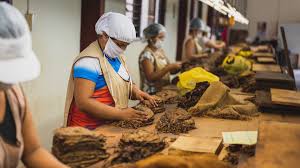
Apart from administrative reforms, some of the major challenges of the micro enterprises are sustainability readiness, working capital blockage, skilled labour (for specific operations) at affordable prices, etc. Issues with OAEs are market linkage, digital marketing, raw material at reasonable prices, market-oriented skills, etc.
Manufacturing MSMEs are a mixed type of entities. Of the 19 million manufacturing MSMEs, 99 per cent are micro and 85 per cent are own account enterprises (OAEs) with no hired labour. So broadly, 3 million are micro enterprises and 16 million are OAEs. Of the latter, 4 million are artisanal units. The immediate challenges of the micro factories and the OAE sector vary.
Apart from administrative reforms, some of the major challenges of the micro enterprises are sustainability readiness, working capital blockage, skilled labour (for specific operations) at affordable prices, etc. Issues with OAEs are market linkage, digital marketing, raw material at reasonable prices, market-oriented skills, etc. There are other issues with respect to occupational health and safety and the availability of common facilities. Here, policy can play a role in many of these.
Skill development by the public sector is often subsidy-based attempting to create an all-pervasive or detailed knowledge in a particular trade. But in an age of specialization, units need specific knowledge of certain parts of an operation. Again, the need is best understood by a unit owner as it varies with its typical requirements. Also, subsidized training, in the absence of any definite business gain, e.g. a job or a work order (for OAE), is often considered a wage-earning avenue, with low interest in both learning and making one learn.
It is suggested that skill upgradation be accompanied by definite employment and/or job work. Therefore, it should always be done in conjunction with a private sector participant who can ensure business or job. Alternatively, units themselves should be given tax concessions for skilling and employing workers.
Digital market promotion has picked up rapidly after Covid. Apart from the technical knowledge of its registration, search engine optimization, availability of bandwidth, etc., success here is a function of access to good photographs. Professional photographic instruments (e.g. for mood photography) and HR are a serious constraint, especially in the 3,700 artisanal clusters housing over 4 million units.
It is suggested that schematic support may be given to create such facilities, starting with one in every state at a place which has the highest concentration of artisanal clusters and later one in every district preferably in the District Industry Centres (DICs) or some district level association office. Simultaneously local talent should be trained to provide service at a reasonable cost through these centers.
Credit comes through financial institutions who generally finance with hypothecation and collateral. OAEs often lack comparable collateral. Again, credit subsidy schemes often go to those proposals which are of high value. Also, the need for credit is often akin to similar types of firms in a cluster.
Micro units often cannot get loans for industrial purposes as they operate from residential or agricultural land. It is suggested that first, a lead bank in a district should create cluster-level financial products, second, all credit-cum-subsidy schemes be given firm-size-wise targets so that the distribution is not skewed, third, in areas which have become truly industrial, current land use (if agricultural) may be given the status of industrial land and fourth, factoring services be geared up at reasonable cost.
It is estimated that MSMEs contribute an estimated 10 to 12 per cent towards scope 1 GHG (Greenhouse Gas) emission, mostly by the factory sector enterprises. Also, top listed companies now need to report on Scope 3 GHG emissions which will definitely include the front-ranking micro units who are their suppliers.
Down the line, most factory sector micro enterprises are unaware of the need and methodology to reduce GHG in the form of a business equation for their type of trade. It is suggested that first, intensive training be supported for getting improved results in BRSR (Business Responsibility and Sustainability Report) Core by MSMEs who are supplying to top 1000 LODR companies, second, steps should be taken to identify zero-investment measures or investments which have a return on investment of one to two months and reduces GHG for sectors having high contribution towards GHG, third, sectoral GHG meters should be created where units implementing GHG targets can proudly demonstrate their contributions towards GHG emission and create a positive spiral among fellow units and fourth, to ensure all these happen at a reasonable price, the capital subsidy should be given for measuring instruments in the form of an equipment bank and training should be provided to create barefoot (locally rooted and affordable) service providers.